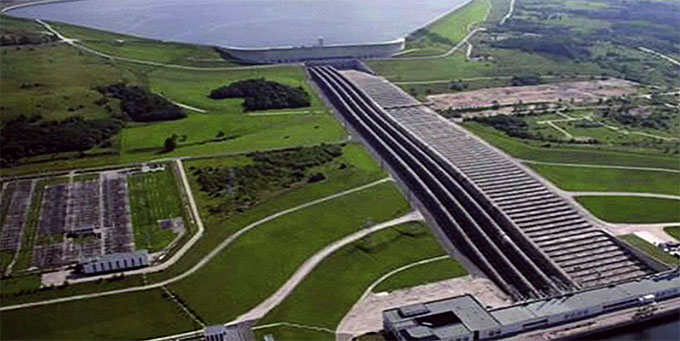
Managing climate change in part involves rapidly scaling-up wind and solar energy.
But as independent videographer Peter Sinclair’s “This is Not Cool” video explains, significant obstacles remain in executing that strategy. One of the biggest challenges?
“The wind doesn’t always blow, and the Sun doesn’t always shine,” says Mark Jacobson of Stanford University. That’s why renewables like wind and solar are referred to as intermittent sources of energy.
Reliable methods of storing energy could help solve the intermittency problem, enabling wind and solar energy to be deployed at larger scales in coming decades.
The video explains virtues of pumped storage. It works by pumping water from a lower to a higher place on windy or sunny days, then letting it fall and drive turbines when demand for energy increases.
“It scales very well, it allows long-term storage, it’s the lowest-cost solution that is currently on the market,” says James Klausner of Michigan State University. While places for pumped storage facilities are limited by terrain factors, the National Energy Renewable Laboratory’s Paul Denholm says there remain opportunities to expand existing pump storage facilities, repower them with new technologies, or potentially develop some new plants.
Batteries – such as those in a new Tesla lithium ion installation in South Australia – represent a “cutting edge,” and the video reports that this technology now is outcompeting traditional power plants.
Another emerging solution, as more and more electric vehicles hit the road, involves storing energy in vehicles’ parked EV batteries, says Dave Tuttle of the University of Texas. The stored energy then could be fed back to the grid in times of shortage or emergency.
Anna Stefanopoulou of the University of Michigan says that in addition to electric vehicle batteries, buildings are sources of thermal energy, and they can be enlisted to feed energy back into the grid when needed. “This is like distributed controllable loads rather than distributed energy sources,” she says.
Denholm says that engineers not long ago generally assumed there is a “wall” limiting how much energy renewables may be able to provide. With countries like Germany and states like Iowa deriving nearly 40 percent of electricity from renewables, those notions appear to be changing.
“Nobody really talks about a hard number anymore,” Denholm says. The current “mental model” anticipates getting 60 or 70 to 90 percent of energy needs from renewables he says. It may be only at that point that “challenges that we really don’t understand start to kick in.”
